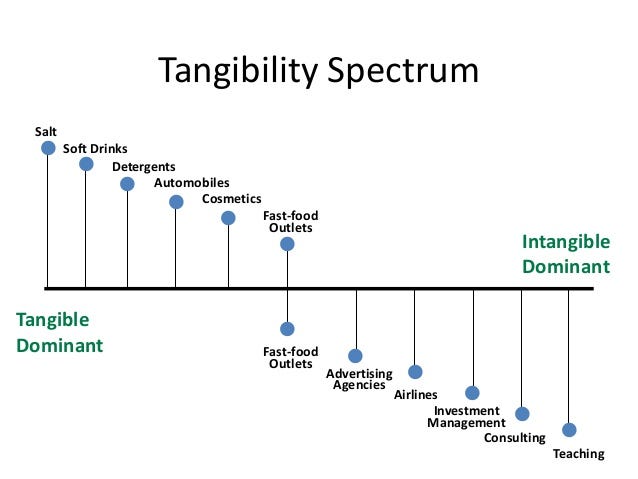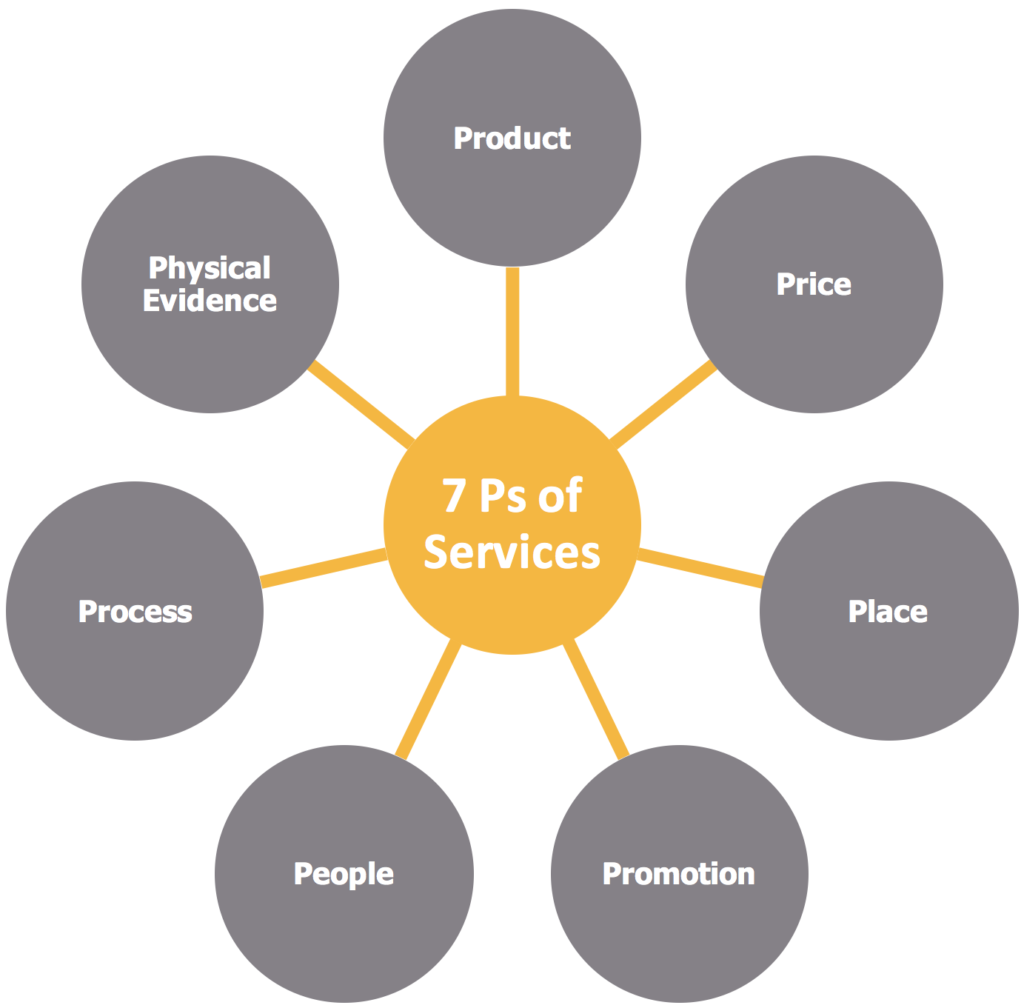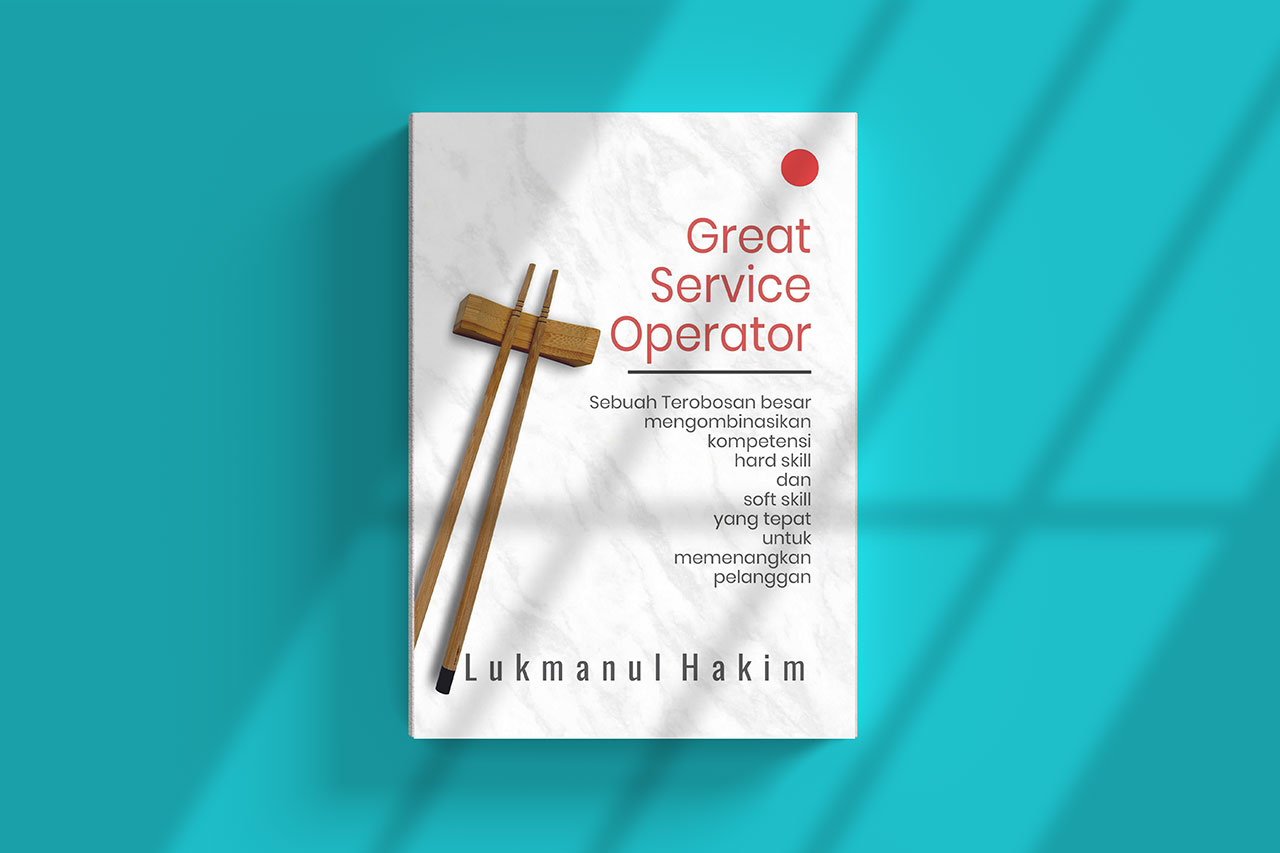Category: Article
Great Service Operator
A major breakthrough combining the competencies of hard skills and soft skills to win over customers
Chapter 1 — Service Marketing 101
“The best way to find yourself is to lose yourself in the service of others.”
— Mahatma Gandhi
Before you are presented with the main point of this book, in this chapter, I will first explain to you about the basic of service marketing concepts that form the core foundation of this book’s material. I believe for most people like you reading this book are familiar with the scope of the service industry and business; because maybe you are currently working in this industry, or maybe you are often associated with this sector, or at least you often see established service companies clearly displayed in front of your eyes at everyday basis. However, I can assure you that if you are truly interested in the world of service, you will read this book as fast as Shinkansen train from Osaka to Tokyo (which a good example of a service business as well).
I also believe that you as readers come from a wide variety of different backgrounds. Maybe from a formal education point of view, some of you have never experienced marketing management course or more specifically, service marketing management course. It indicates that you have no linearity between the education you majored in and your current job. But, ease yourself, that is not a weakness. Because I truly believe when it comes to the world of business and marketing, I hold the philosophy of holistic perspective that everyone can inclusively learn, act, implement and evaluation.
Service Marketing Concept
The development of service marketing study that continues to snowballing is one of the reasons for the continuous evolution of the service industry, making a lot of research and literature on service marketing study continue to develop in the current 21st century era. Initially, scholars in the marketing field found that there was a very fundamental differences between tangible product marketing and intangible service marketing. Because service is generally a non-physical performance, they cannot be calculated, measured, inventoried, tested, verified, and such. Therefore, it is sometimes quite difficult to measure the service quality because of its intangible characteristics.
Unlike the concept of marketing in general, what is interesting in the science of service marketing is that the scope is very broad but yet so focused, applicable and useful in terms of knowledge, insights, and tips in managing a service organization. Because the science of service marketing is not only relevant and useful in service organizations where the core business is intangible, it can be mixed with a wide variety of industries and physical businesses — to support the core activities of the business and provide more positive added values in the eyes of customers. Because in the end, the use of services will always be empowered even in businesses that is so physical-based products, because one of the functions of service is to address added values to customers from the organizational side, while from the customer side, they will be more satisfied with a whole new experience when consuming them.
Generally, almost all industries offer products which are a combination of physical products and services. However, each industry has different characteristics and has a tendency towards the manifestation or non-existence of its products. Some have both because they have a physical product but also have services that are part of their routine activities, such as a restaurant or café. For example, I present the figure in the bottom to get the insight into the spectrum of manifestation and non-existence of a product or service.

As you can see from the far left, salt is an example of a very tangible product and generally doesn’t really need additional services when offering it to customers. However, slowly it becomes clearer toward the right dominant attribute, the types of products or goods are starting to mix with the services to satisfy customer wants and needs. Getting to the right, the tangibility feels more blurred and invisible because the services offered are increasingly more and more intangible. The service industries on the lower right, such as consulting and education, are those that are often referred to as “pure” service providers. From here, you can begin to distinguish the obvious differences, from physical product such as salt to intangible services like education. That big difference ultimately changed everything: from the process of creating, the sales and marketing activities up until the consumption method.
There have been many studies that link service quality and company profit, because service quality will produce many satisfied consumers which results in customers who are loyal to the company that owns the successful brand.
So, what is a service?
By definition, a service is all economic activity whose output is not a physical or construction product, generally consumed at the time of production, and provides added value in a form which is basically an intangible thing offered to the consumer. The term intangible often causes friction in the cognition of readers who are still unfamiliar with service. If indeed a service business has an intangible nature, why does a hotel have buildings and facilities that are physical? And an airline has an airplane and seats in its interior so that all passengers can sit back and enjoy the trip from city A to city B?
I will explain the awkward cognitive friction question with an explanation of the service marketing mix. First, have you ever heard of a marketing mix or marketing mix? Or familiar with the term 4P? Product, price, place, and promotion. Because services have slightly different perspectives and activities, there are additional 3Ps specifically for the service marketing mix, namely process, people (human/staff), and physical evidence. These additional 3Ps are what make the fundamental difference between general marketing and service marketing.

Product
Product is something that is most basic in marketing because it is the core and purpose of business activities to satisfy consumer needs and wants. The term product in this world means a service. It is intangible, varies, cannot be stored, cannot be owned (only rent), and cannot be separated. Services have the advantage in terms of its flexibility to produce standardized or customized product of service because of the intangibility and also because a service does not created from the physical manufacturing process. Many products in the form of services that can be customized according to the needs and wants of the client or customer, but, what needs to be paid attention carefully is that the more you make a customization that is too far from the standard of service, the standard of service quality will delicately change and even decrease.
Place (Service Distribution)
Place refers to the ease of access a customer has to a service. Service distribution involves choosing a physical location, choosing which link to use, and what channel to choose — physical or digital. In many cases, service companies offer customers a choice of distribution channels, which can include visiting branches, dealing with agents or representatives, using the Internet, call centers, or self-service machines such as ATMs. Today, the speed and convenience of place and time have become important determinants of service delivery. To ensure effective distribution, companies often to offer long time duration of selling and serving (e.g. 24/7), use more distribution channels, and develop their websites to allow customers to get detailed information and help, place orders, and e-transactions.
Price
Price or pricing in a service plays an important role because it is one of the main indicators for customers to judge especially in the name of the quality of a service. Customers have a lot of expectations on the price of a service, especially in brands that are less well known because of its intangible nature as an effort to help them assess, perceive, and set expectations for it. From the service company side, of course, management must understand and understand how to manage perceptions in presenting the appropriate level of quality to be offered to their customers. Moreover, the management of a service company must also understand the conditions of its resources such as its staff and capital. All of these are carefully must be used and combined by management carefully as an attribute and variable for consideration in setting prices for their services. If the price is too low can cause inaccurate imbalances in the quality of service that you already have added. Price that is too high can also set too high customer expectations which may be difficult to match in terms of actual service quality.
Promotion
In general, in terms of promotion, planning, and application between physical products and services are different. Due to its intangible and varied characteristics, its main function is to manage promises and expectations. Therefore, marketing communications on services will have a more sensitive effect on customers, if what is communicated is not in accordance with the actual quality of service. Coordinate with the company’s internal division regarding the actual conditions when interacting with customers in order to minimize inaccuracies and errors in showing information about the quality of its service. Some ways to make marketing communications for services efficient and effective are: create a strong brand image in the service sector, make realistic communication promises, educate customers if the process or service product is new and complex, and build internal and external communication in effective companies.
People
In the service marketing mix, a person or people is defined as someone who works in a service company and provides services. Since staff are part of the brand and product of the service company, the success of the service company depends on the staff providing service to the customer. The interaction between staff and customers in a service environment is very important because it can increase experience and satisfaction. Of course, it is not an easy task for service companies to train and educate their staff to have a good standard of customer service, because one of the characteristics of service is variability. They are the faces that are seen in front of customers in everyday business activities. Therefore, the importance of giving full concentration to staff, such as: staff quality development, staff recruitment and selection processes, job design and analysis, training and development, competitive enhancement and job adaptation, encouragement and exploration of potential, providing decent wages, problems mental and physical health, safety and hygiene, employment retention, performance appraisal, staff welfare management and so on. Coupled with service innovation in the field of technology, this certainly provides added value for the company in customer perceptions, because a positive reputation is not easy to build in a short time.
Process
One of the characteristics of services that distinguishes intangible services from physical products is that traditionally the process of consumption by consumers and production by producers is carried out at the same time and place. The process carried out is clearly displayed in front of consumers who can feel it with all the five senses. In contrast to physical products, because the production process is at a different time and place, from the consumers side, they cannot see the start of the process until the completion of the production of a product. Because the characteristics of the service, namely inseparability, makes a service generally more sensitive. Therefore, service companies must prepare their staff, especially those on the front lines, to be ready with hard skill and soft skills competencies as their main weapons because the process can be felt and seen by customers directly.
Physical Evidence
Physical evidence is the most attractive element in the service marketing mix. Because physical evidence is something that contrasts with the characteristics of an intangible service. The core business of a service is generally not physical, cannot be counted, measured, inventoried, tested, verified, and the like. However, physical evidence of a service is used to support the core business. If a physical product has packaging, the function of using physical evidence of a service can be said to be the same thing. A hotel building containing a lobby, rooms, facilities and other physical evidence are only supporting attributes of the main service offered, namely a short stay. All of this physical evidence cannot be possessed by consumers who pay for their services. They can only “rent or borrow temporarily” from the service provider organization.
Because the intangibility of the service causes great risk and uncertainty on the consumer side when making decisions. The most common and familiar way that a service company can do is by showing physical evidence and the environment during the service process. Physical evidence can be used as a “cue or sign” to signal what the customer wants to perceive. This allows the company to “tangibilizing the intangible”. So, physical evidence can be used for various purposes that involve consumers such as making perceptions and expectations, enhancing images, showing identity, reducing risks, and certainly helping consumers in making decisions about the services they want to buy. Service management or marketers must be able to design evidence and the physical environment in such a way as to align with the brand image of the service company.
The additional 3Ps of the service marketing mix are of course a complementary or supportive attribute of service characteristics that is different from marketing on physical products. The seven Ps in service marketing mix are integrated and mutually reinforcing in order to get their essence that is complete and complex but still simple in the eyes and hearts of customers who see and feel it.
Service Characteristics
After you understand the 7Ps service marketing mix, now you must also understand what are the characteristics of services that distinguish physical product marketing in general:
Intangibility
In general, a service is not physical, cannot be seen, cannot be felt, cannot be calculated, measured, inventoried, tested, verified, and such as in physical products. Therefore, many consumers find it difficult to explain descriptively to other consumers about the consumption of their services. In addition, if there is a lack of physical evidence that is connected and as a support for a service, it will add to the uncertainty for consumers when they want to choose a service. And also, what you have to understand is that every consumer has different preferences and backgrounds. Therefore, services are complex and have many important variables that must be filled and demonstrated when a service is present to offer its target market.
Inseparability
As explained earlier, the real difference between services and physical products is that in most cases, producers and consumers are at the same time and possibly in the same place. Thus, generally consumers are present when the production process is taking place, making producers or staff representing service companies interact directly with consumers who are consuming them. This makes the position of the service company staff very vital because he or she represents the company and the brand that already has a certain credibility and brand image that has been built for a long time and is not easy maintain. In addition, from the customers side who have already built perceptions and expectations beforehand, they will get service experience from the staff which results in whether the customers are satisfied or not after consuming it.
Variability
The uniqueness of a physical product that is created from manufacturing machine processes with service is located in the form of uniformity. Because traditionally, services are still mostly carried out by people who are staff of service companies— the actions and performance of each staff of course vary in terms of ability to serve them. This results in difficulty equalizing the service ability of staff even though they have been trained, educated and given the same uniform due to differences in backgrounds, experiences, and personal characteristics of each person. The problem that is often encountered in the service environment is the difficulty of monitoring and controlling the service standards that have been designed by management to be implemented in the daily work routine of each staff.
Perishability
When physical products can be stored, resold, replicated, or returned; services cannot be that easy. Even though a service can be resold, repeated, or returned, but the atmosphere, taste, and experience are definitely different. This is the key word. The characteristics of this service seem confusing indeed, I will try to explain it by providing a practical example. If you have bought a ticket to your favorite band’s concert but suddenly something keeps you from coming to the concert, that opportunity is lost. Even though the following year the band has another concert and you could finally come, but the atmosphere, feel, and experience of the two concerts were definitely not the same. This is based on the presence of one of the other service characteristics that also contributes, which is variability. There are two things that can be seen, during the concert there is something called a joint consumption process with the audiences or other consumers, which creates an atmosphere in such a way as to produce a unique service experience. The second is the variability of the band. Both concerts are performed by bands who are humans and there may be differences in the performance of the two concerts from various variables that shape them such as mood, performance, feelings, and many more.

